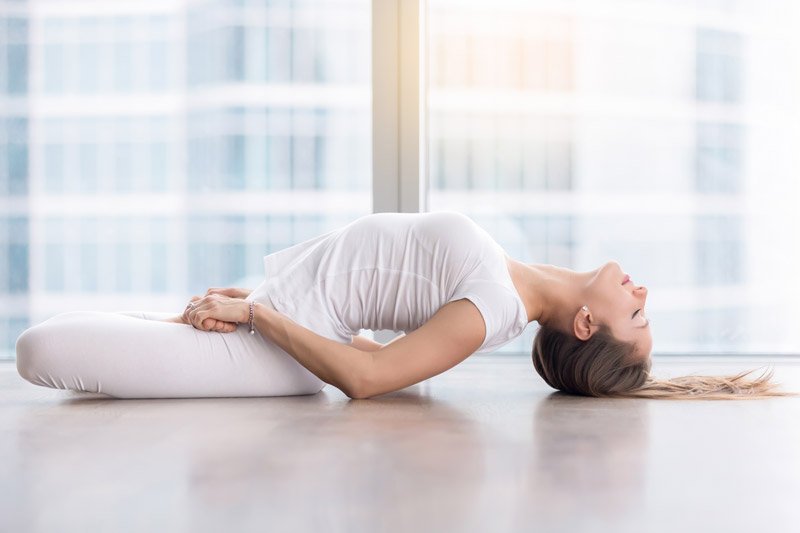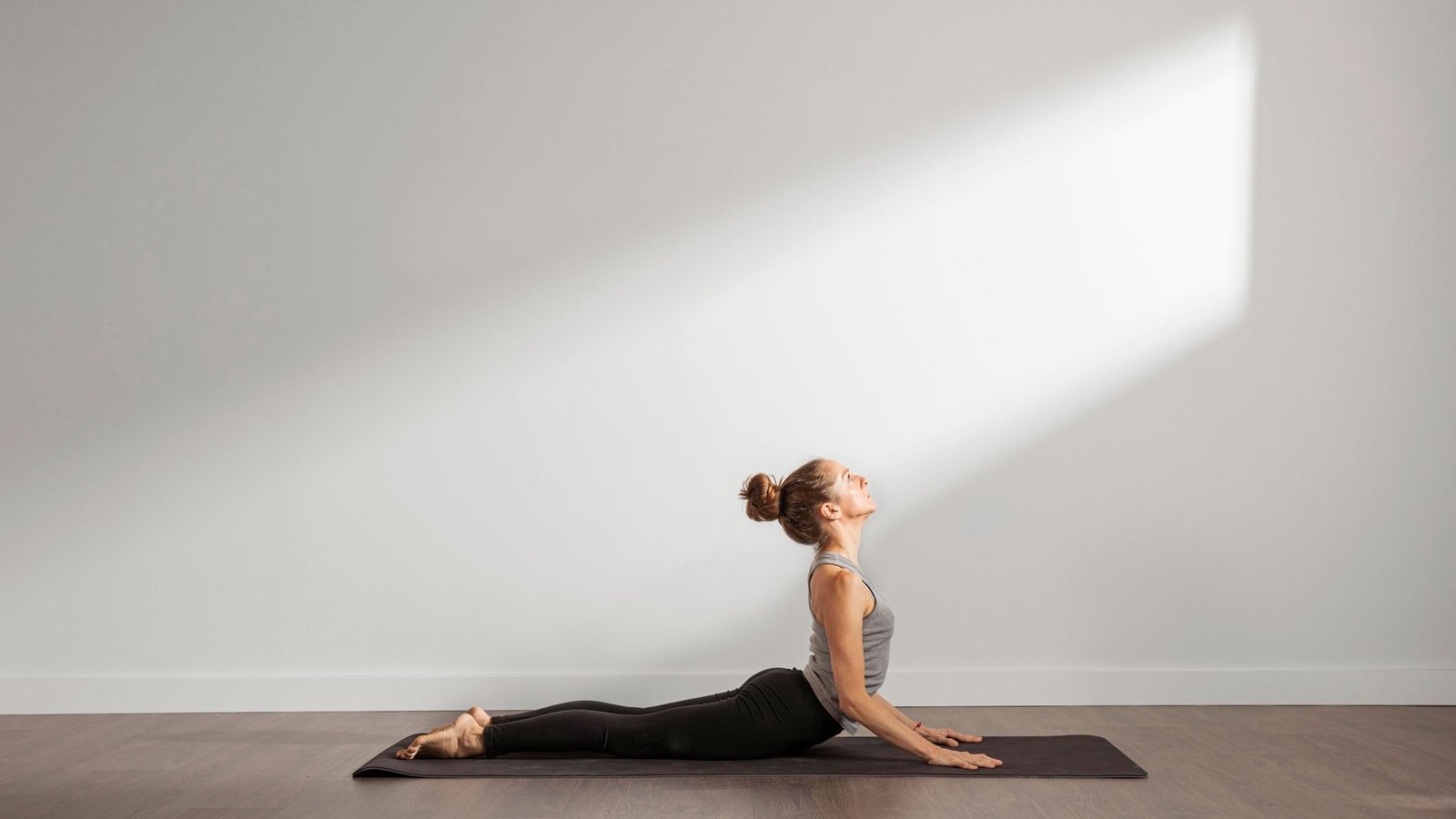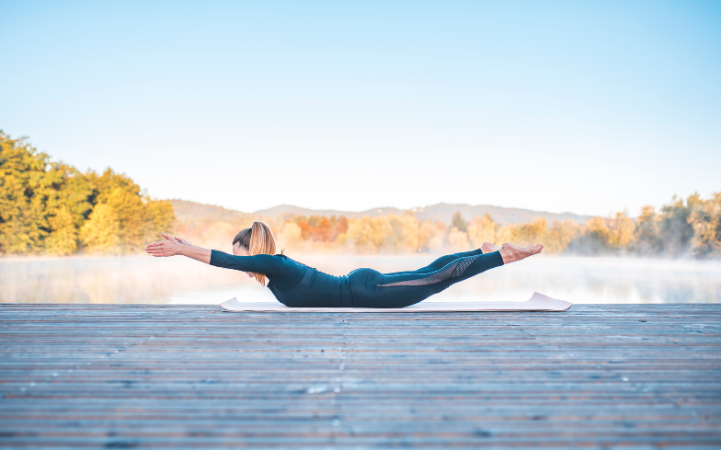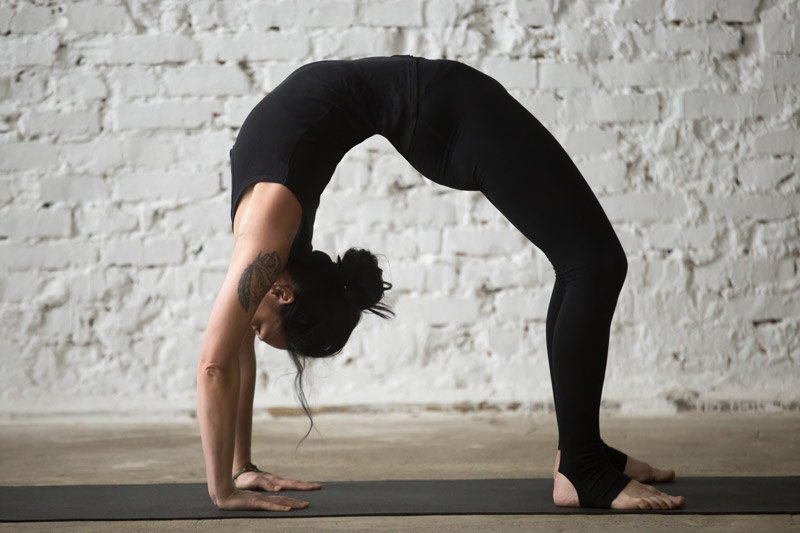Matsyasana, or the Fish Pose, is a traditional back-bending yoga posture known for opening the heart, expanding the chest, and stimulating the throat and abdominal areas. When performed in Padmasana (Lotus Pose), it becomes a more advanced variation that deepens the stretch and adds meditative benefits. Practicing Matsyasana in Padmasana requires flexibility in the hips, knees, and back, and provides a profound experience of expansion and energy flow in the upper body.
Steps to Perform Matsyasana in Padmasana
Begin in Padmasana: Sit in Lotus Pose by placing your right foot over the left thigh and the left foot over the right thigh. Make sure both knees touch the floor and the spine is erect.
Lie Back Slowly: With control, begin reclining backward. Use your elbows for support as you lower your back onto the floor.
Lift the Chest: Once your back is resting on the floor, press your elbows down and lift your chest upward.
Arch the Spine: Create a gentle arch in your upper back so that only the top of your head touches the floor. Your crown should gently rest on the mat without bearing weight.
Place Hands Comfortably:
Traditional Method: Hold your big toes with your fingers if possible.
Alternative Method: Keep your palms on the floor beside your hips or under your buttocks.
Breathe Deeply: Remain in the pose for 15–30 seconds or longer with slow, deep breathing, keeping your focus on the chest and throat opening.
Release the Pose: Press your elbows into the floor, gently lift your head, and lower your back down. Sit up slowly and release your legs from Padmasana.
Benefits of Matsyasana in Padmasana
Opens the Chest and Lungs: Enhances lung capacity and promotes deep breathing by expanding the rib cage.
Stimulates the Thyroid and Parathyroid: The stretch in the throat region helps regulate hormonal balance and metabolism.
Improves Posture: Counteracts the slouching posture caused by long hours of sitting.
Strengthens the Upper Back and Neck: Develops strength and flexibility in the cervical and thoracic spine.
Aids Digestion: The mild pressure on the abdominal organs stimulates digestion and alleviates constipation.
Calms the Mind: Deep breathing and chest expansion can reduce anxiety, stress, and fatigue.
Balances the Chakras: Activates the heart (Anahata) and throat (Vishuddha) chakras, promoting emotional expression and self-confidence.
Tips for Practicing Matsyasana in Padmasana
Warm Up: Prepare your body with hip openers and backbends before attempting the pose.
Support Your Head: If your crown doesn’t comfortably reach the floor, use a folded blanket or cushion.
Avoid Forcing: Don’t strain the neck or lower back to achieve a deeper arch; prioritize comfort and alignment.
Focus on the Breath: Deep, rhythmic breathing enhances the effectiveness and meditative quality of the posture.
Use a Spotter: Beginners may benefit from assistance when reclining into the pose, especially in Padmasana.
Cautions and Contraindications
Knee or Hip Injuries: Avoid Padmasana and this pose if you have pain or stiffness in these joints.
Back or Neck Issues: Individuals with serious spinal or cervical problems should avoid the pose or use modifications under expert guidance.
High or Low Blood Pressure: Practice with care and avoid holding the pose too long.
Dizziness or Vertigo: The head position may induce dizziness in sensitive individuals—exit the pose slowly.
Pregnancy: Avoid this pose during pregnancy due to the pressure on the abdomen and the backbend.
Matsyasana in Padmasana is a powerful yogic asana that opens the chest, strengthens the spine, and invigorates the practitioner both physically and energetically. It blends flexibility, strength, and mindfulness, making it ideal for intermediate to advanced practitioners. While the pose offers profound benefits, it’s important to practice with patience, respect for your body’s limits, and proper warm-up. With regular practice and careful attention, Matsyasana in Padmasana can become a deeply enriching part of your yoga journey.






